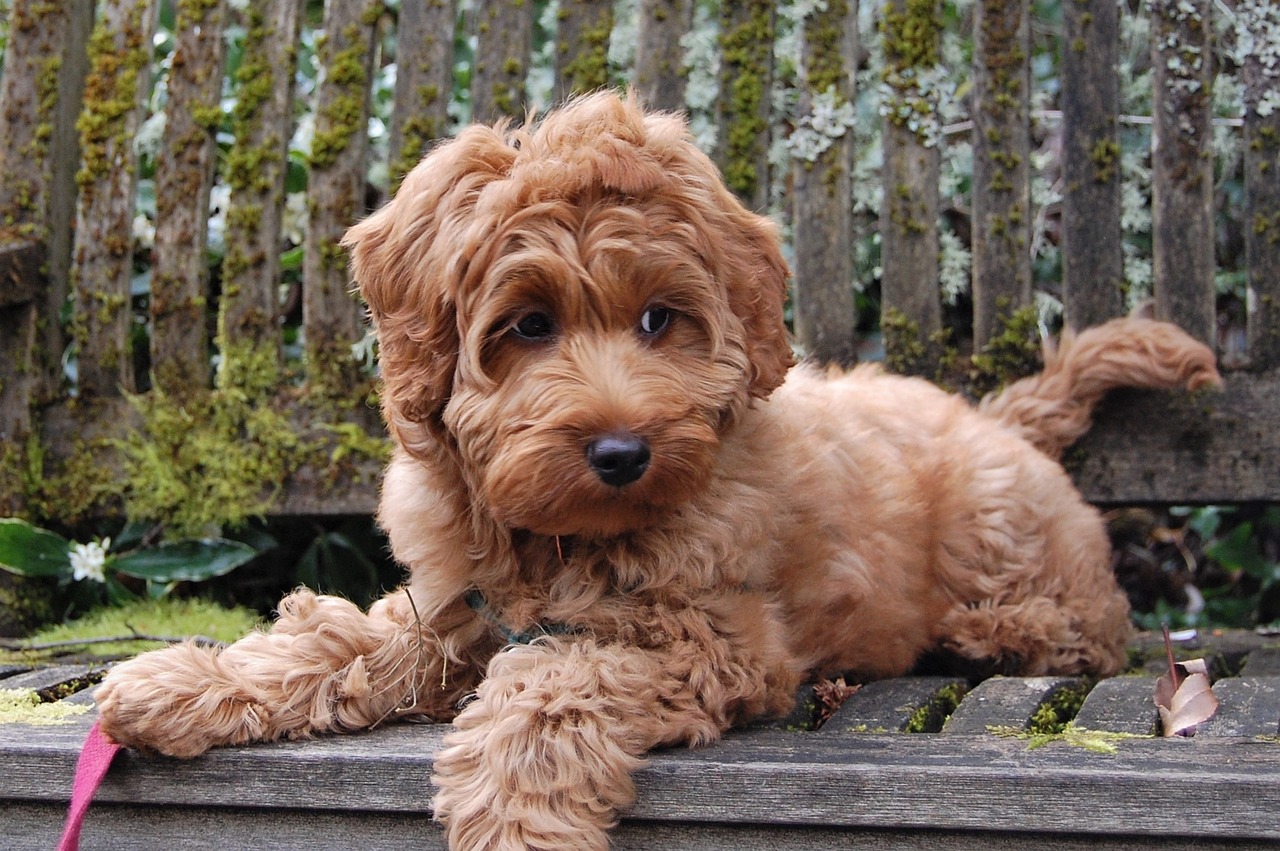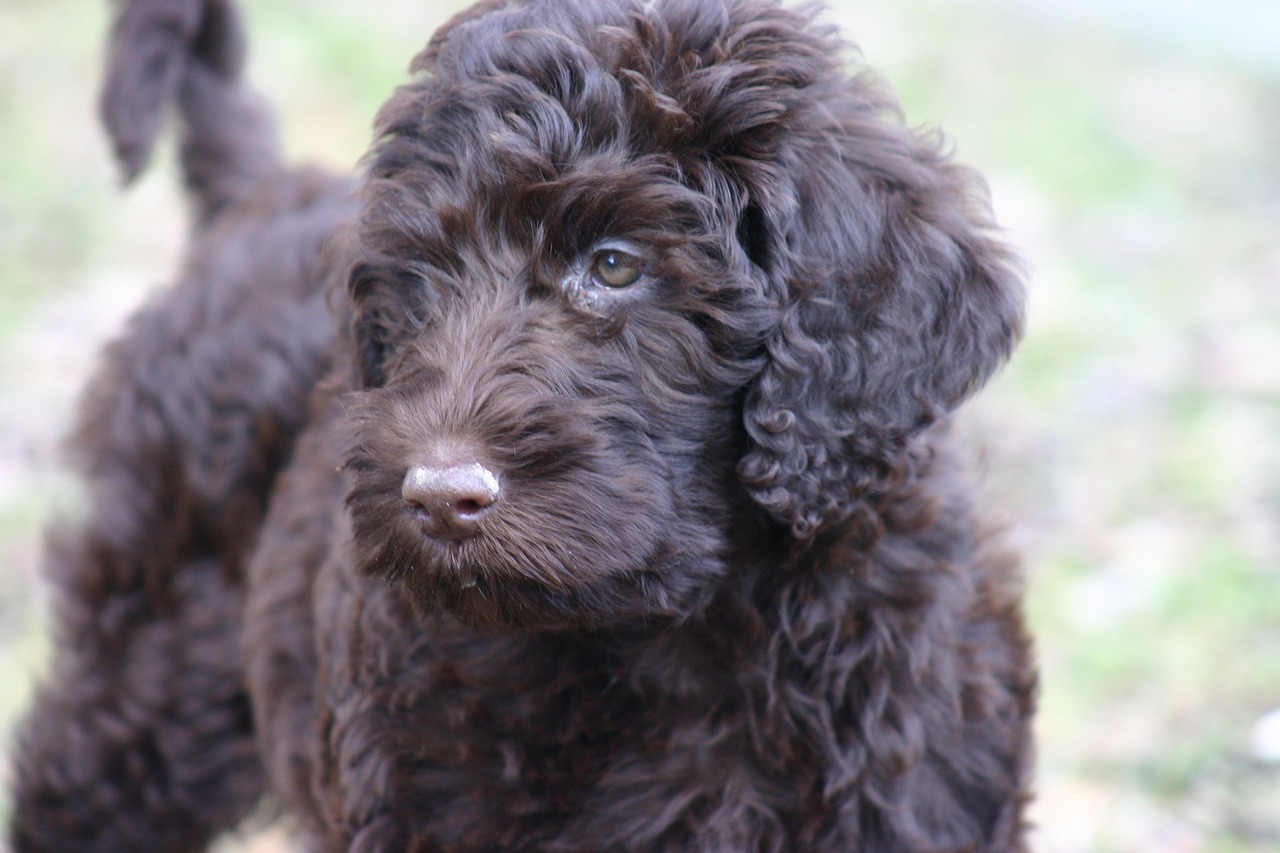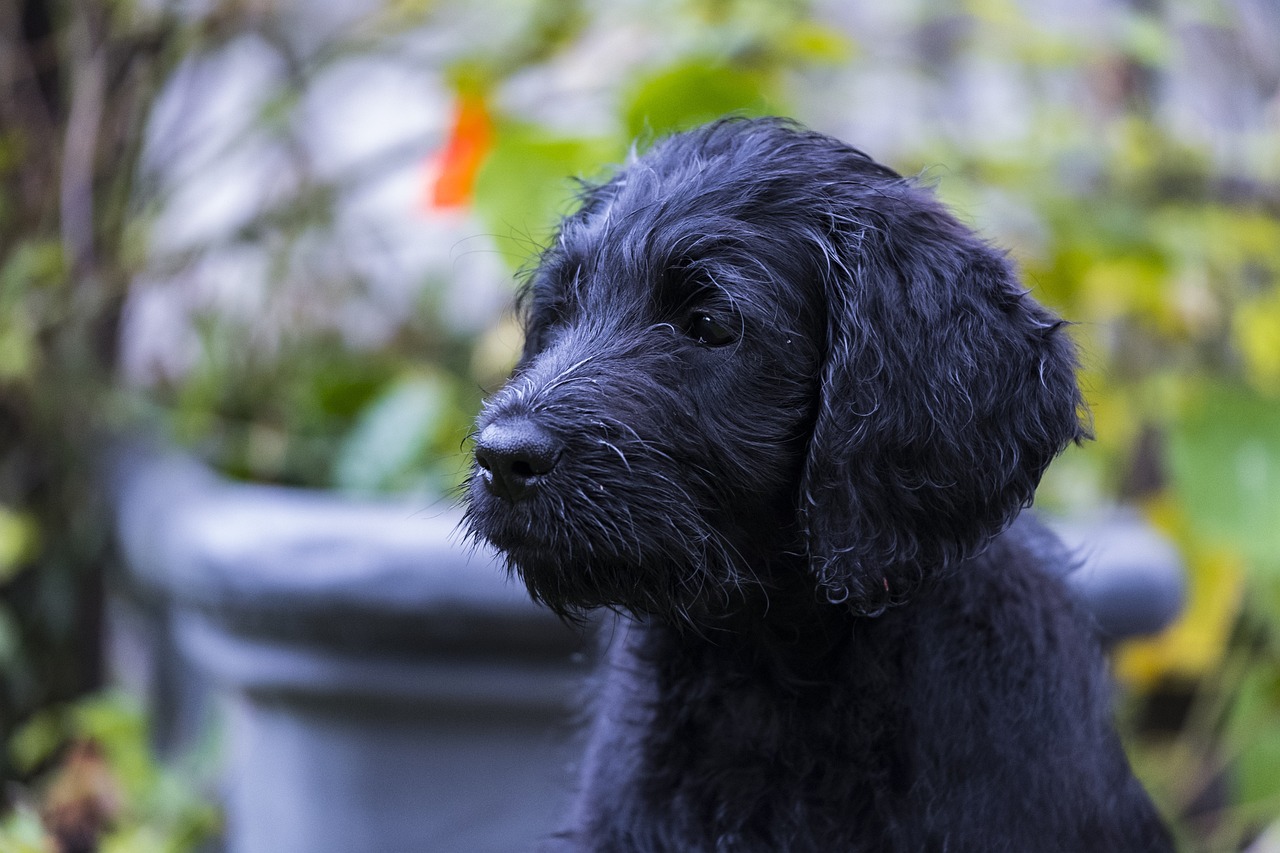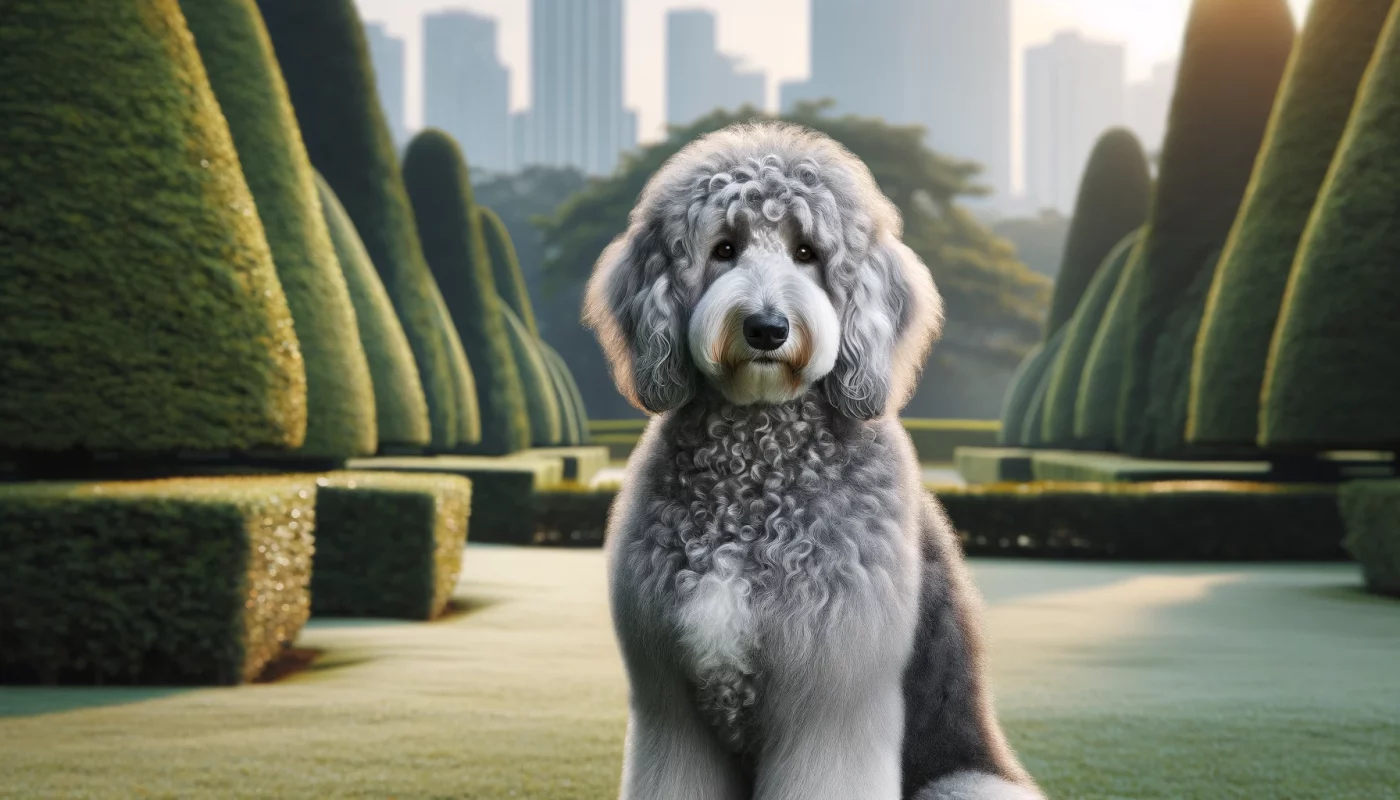
Labradoodles are beloved for their charming personalities, hypoallergenic coats, and their status as wonderful family pets, but one of their most appealing features is the stunning array of colors in which they come. These delightful dogs, a hybrid of Labrador Retrievers and Poodles, inherit a rich palette of coat colors that make each one uniquely attractive. From the classic cream to the rare phantom, Labradoodles can display a diverse spectrum of shades. This article explores seven stunning color variations of Labradoodles, providing insights into how each color not only affects their appearance but also how it might influence grooming needs and visibility in different environments.
1. Cream

The Cream Labradoodle is perhaps the quintessential color of this breed, exuding a soft, gentle charm that appeals to many owners. This light color can range from almost white to a rich, warm cream with golden undertones. Cream Labradoodles often have an even color distribution, which enhances their fluffy appearance, making their coats seem almost cloud-like. This color is not only aesthetically pleasing but also practical, as it tends to show less shedding and dirt than darker coats, making them a favorite among families.
2. Chocolate

Chocolate Labradoodles boast a rich, deep brown color that can vary from a light milk chocolate to a dark, almost black chocolate. This luscious coat color comes from the Poodle lineage and is highly sought after for its striking appearance. Chocolate Labradoodles often have captivating amber or green eyes that contrast beautifully with their dark fur. Owners should note that the sun can bleach the rich brown to a lighter hue, so protective measures may be necessary to maintain the vibrancy of their coats.
3. Red

Red Labradoodles feature a bold, vibrant coat that truly makes them stand out in a crowd. This color can range from a deep, rusty hue to a bright, fire-engine red. The intensity of the red coat is eye-catching and can be a significant factor in the dog’s popularity. Red Labradoodles are especially striking when their coats are well-groomed, showcasing their glossy sheen and vibrant color to full effect.
4. Black

Black Labradoodles have a sleek, elegant coat that offers a striking contrast to the more common lighter shades. Their rich, dark fur can range from jet black to a softer charcoal. A well-groomed black Labradoodle has a glossy coat that shines beautifully under the sunlight. This color is particularly practical for owners who enjoy outdoor activities with their pets, as it does not show dirt easily.
5. Silver

Silver Labradoodles are a rarer color variation that develops as the dog matures. Puppies born black may gradually lighten to a stunning silver gray over the first few years of their life. This unique coloring process is a result of the fading gene inherited from the Poodle side. Silver Labradoodles capture the elegance of their coat color, which pairs beautifully with their playful and loving temperament.
6. Parti

Parti Labradoodles have a coat that displays two distinct colors with one of the colors being at least 50% white. The other part of their coat can include any of the standard Labradoodle colors like black, red, or chocolate. This dramatic color combination makes each Parti Labradoodle unique, with no two dogs having the same pattern. These dogs are particularly beloved for their distinctive and eye-catching appearance.
7. Phantom

Phantom Labradoodles are marked similarly to phantom Poodles, where the primary color is complemented by distinct markings of a second color appearing above the eyes, on the sides of the muzzle, beneath the tail, and on the chest. This rare and unique coloration pattern makes them highly desirable and strikingly beautiful, with a mystique that adds to their allure.
In conclusion, Labradoodles offers a wonderful array of coat colors that cater to a wide range of aesthetic preferences. Whether you prefer the understated elegance of a cream Labradoodle, the bold vibrancy of a red one, or the unique patterns of a phantom, there is a Labradoodle color for everyone. These colors not only enhance the breed’s natural beauty but also bring to life the vibrant personality of each dog, making the Labradoodle a continuously popular choice among dog lovers worldwide.
Frequently Asked Questions About Labradoodle Colors
1. What are the most common Labradoodle coat colors?
The most common Labradoodle coat colors include cream, chocolate, and black. Cream Labradoodles are highly popular for their soft, neutral appearance that matches well with their friendly nature. Chocolate Labradoodles range from light milk chocolate to a rich, dark brown, appealing to those who prefer a more distinctive look. Black Labradoodles offer a sleek, elegant appearance, with their glossy coats providing a striking contrast to lighter colors. These colors are prevalent due to their aesthetic appeal and the commonality of these coat colors in both Poodle and Labrador Retriever genetics.
2. Can Labradoodles be multi-colored?
Yes, Labradoodles can indeed be multi-colored. The Parti coloration is where the Labradoodle has a coat that is 50% white with patches of another color like black, red, or chocolate. There are also merle patterns where mottled patches of color appear in the coat, and phantom Labradoodles which have specific markings similar to those seen in Doberman Pinschers, such as light markings over the eyes, cheeks, and sometimes legs and under the tail.
3. What is a merle Labradoodle?
Merle Labradoodles have a unique coat pattern featuring mottled patches of color due to a gene that alters the pigmentation. The merle pattern can affect all coat colors and create a beautiful, marbled appearance on the fur. It’s important to note that breeding merle dogs requires careful genetic consideration to avoid health issues associated with the merle gene, such as deafness or blindness, particularly if breeding two merle dogs together.
4. How does the coat color of Labradoodles affect their grooming needs?
The coat color of Labradoodles doesn’t directly affect their grooming needs, which are more influenced by coat type—fleecy, woolly, or hair. However, lighter-colored Labradoodles may show dirt and stains more readily than darker ones, potentially requiring more frequent bathing. Regardless of coat color, all Labradoodles need regular grooming to prevent matting and maintain coat health, including regular brushing and professional grooming every few months.
5. Do Labradoodle puppies change color as they grow?
Yes, Labradoodle puppies can change color as they mature. For instance, puppies that appear black at birth may develop into silver or blue as adults due to the fading gene inherited from the Poodle side. Similarly, dark chocolate puppies may lighten over time. This color change typically stabilizes by the time they reach two years old.
6. Are there any health issues associated with certain Labradoodle colors?
Certain colors, particularly those produced by the merle gene, can carry health risks if not bred responsibly. Merle Labradoodles can be prone to genetic disorders such as deafness and blindness if two merle-colored dogs are bred together. Otherwise, the coat color in Labradoodles generally does not correlate with specific health issues.
7. What is a phantom Labradoodle?
A phantom Labradoodle has a coat color pattern that includes a primary dark color with defined tan markings in specific areas: above each eye, on the sides of the snout, on the chest, and possibly on the legs and beneath the tail. This pattern is similar to that seen in some breeds of terriers and Doberman Pinschers. The contrast between the dark and light areas can be quite striking and is a sought-after look among some Labradoodle enthusiasts.
8. How is coat color determined in Labradoodles?
Coat color in Labradoodles is determined by the genetics inherited from their Labrador Retriever and Poodle parents. The combination of genes from each parent will dictate the puppy’s coat color. Some colors, like black and chocolate, are due to dominant genes, while others, like red and silver, are influenced by recessive genes.
9. Can Labradoodles be pure black?
Yes, Labradoodles can be pure black. This color comes from a dominant gene, which means that if a puppy inherits the black gene from either parent, it will likely have a black coat. A pure black Labradoodle has no other colors or markings on its coat, offering a striking, uniform appearance.
10. What are the rarest Labradoodle colors?
Some of the rarest Labradoodle colors include silver, which develops as the dog matures, and merle, which involves a complex gene affecting the coat color. Phantom and party colors are also less common and highly sought after due to their distinctive markings and unique appeal. These rare colors can be especially striking and make the dogs stand out due to their unique appearance.
Discover more from reviewer4you.com
Subscribe to get the latest posts to your email.





